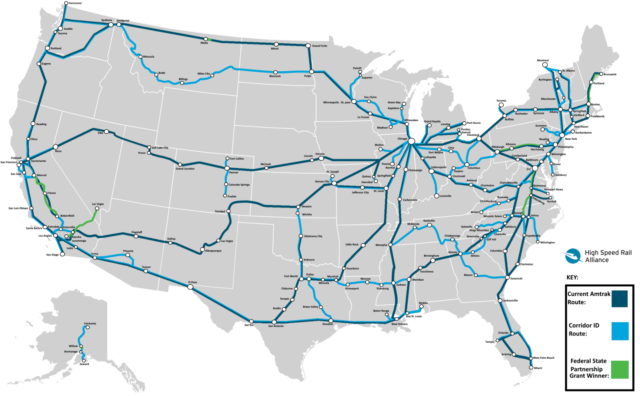Challenges in the U.S. High-Speed Rail Development
As the United States grapples with its transportation infrastructure, the development of high-speed rail (HSR) is a hot topic. Despite a population of over 340 million and extensive highway and airport systems, the U.S. currently lacks any operational high-speed rail lines. However, two major projects are now under construction, raising hopes that the U.S. can catch up with the fast and efficient rail systems found in countries like China, Japan, and those in Europe.
Current Projects
Rick Harnish, a prominent figure from the High Speed Rail Alliance, highlights significant advancements, noting, “The first is the San Francisco to Los Angeles route, which presents unique challenges because of California’s mountainous terrain.” Another notable endeavor is the route connecting Las Vegas and Los Angeles, which benefits from flatter landscapes.
Additional plans are on the horizon, including a rail line that would connect Portland, Oregon, to Seattle, Washington, and extend to Vancouver, Canada, as well as a line between Dallas and Houston. However, progress has been slow, particularly for the Portland to Seattle route, while the Texas project faces uncertainty after a federal grant was rescinded by the previous administration.
Global Comparisons
In stark contrast, China is set to expand its high-speed rail network to over 50,000 kilometers (31,000 miles) this year, while the European Union boasts more than 8,500 kilometers of such lines, led by Spain with approximately 3,190 kilometers. The United Kingdom’s High Speed 1 is currently the only HSR line active, although High Speed 2 is under construction between London and Birmingham.
| Region | HSR Length (km) | Key Projects |
|---|---|---|
| United States | 0 | Los Angeles-San Francisco, Las Vegas-LA |
| China | 50,000+ | Nationwide expansions |
| European Union | 8,556 | Flexible connections across countries |
| UK | 68 (HS1) | High Speed 2 under construction |
Barriers to Development
American public perception poses a challenge, as journalist Will Doig explains: “We are a car-centric society. Many believe HSR is unnecessary or do not want it in their region.” Additionally, there has been a notable reluctance from government officials to invest in rail projects, further delaying progress.
Compounding these challenges, Stephen Gardner, the CEO of Amtrak, resigned recently under reported pressure from the White House. Amtrak does not operate any high-speed trains at present but plans to introduce 28 new 160 mph Acela trains on its Northeast Corridor line later this year. Unfortunately, only a small portion of the line permits speeds exceeding 150 mph.
Future Outlook
Globally, there are now 23 countries with operating high-speed rail systems, according to Harnish’s organization. However, establishing safe HSR networks involves complexities such as eliminating highway crossings and maintaining straight, sealed corridors.
As China continues to build its impressive high-speed railway and connects cities with significant economic benefits, experts suggest that the U.S. must shift its cultural attitude towards public transport to embrace the potential of high-speed rail. The need for federal support remains crucial for the American HSR vision to materialize, yet existing political hurdles challenge this endeavor.
Moving forward, there are calls for international collaboration, particularly involving countries with experienced rail systems. The potential for a partnership between the U.S. and China stands out, though such cooperation may face numerous political challenges.














